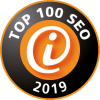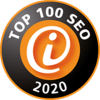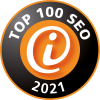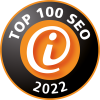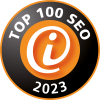Outdoor advertising is now increasingly found in digitized form and as an integral part of the programmatic ecosystem. Combining outdoor advertising with other digital worlds opens up many new, exciting possibilities for personalization and targeting.
So-called digital out-of-home advertising, DOOH for short, is currently considered an enormous growth area, especially in combination with programmatic, the automatic, individualized purchase of advertising space in real-time. However, due to the complexity of this real-time character, it makes more sense to use data-based targeting. In this way, you can exploit the many advantages of programmatic without getting into time problems with manual management.
Which data comes into play with the programmatic booking depends entirely on the campaign’s objective and whether the customer already has their data.
If, for example, it were known that the relevance of a product depends on the weather conditions, one would focus on weather targeting with current weather data, which is now available on many platforms.
It gets a lot more exciting when you deal with audience data. This data describes when and where a specific target group is currently located. Depending on the survey method and the data source, different data sets for each target group are more or less suitable for an evaluation. However, most agencies nowadays pay attention to the high quality of the data and thus promise a certain level. The fact is that site selection and timelines made before the campaign are a thing of the past. If the delay between the bid request won and the spot broadcast is minimal, the spot will be broadcast exactly where the target group with the corresponding index value is currently located.
Despite the one-to-many medium reputation, personalization and outdoor advertising present themselves as useful marketing tools
Outdoor advertising is and remains a helpful tool for building a large reach and has great potential to be named the next digital mass medium. However, many marketers risk destroying this advantage by micromanaging campaigns by discussing the sensible use of data too often. Rather, the targeted use of data is intended to increase the importance of the advertising messages in the relevant target groups. Even if it is not possible to address individual people, there is still the possibility that the specific message will be perceived as long as the target group is receptive to it. And by finding the target group in a public space, you have more leeway than many other mediums, including fragmentation.
Supply & Demand
As a rule, digital agencies accept the offer of outdoor advertising really well. In addition, they usually have their data, which can be used to optimize campaigns. With regard to bookings for classic outdoor advertising, the procedure is often static. A pre-filter, limited to the top 5 or 10 cities, is often used here. For example, Munich Airport is not in Munich, but in Freisingen, or the Centro shopping center becomes the local mall in Oberhausen. This procedure is almost in contrast to the modern dynamic and data-driven approach. Adjusting the planning to people’s actual mobility behavior would promise data sets that would be somewhat more sustainable.
Digital out-of-home advertising and other channels
The small prognosis for future developments




